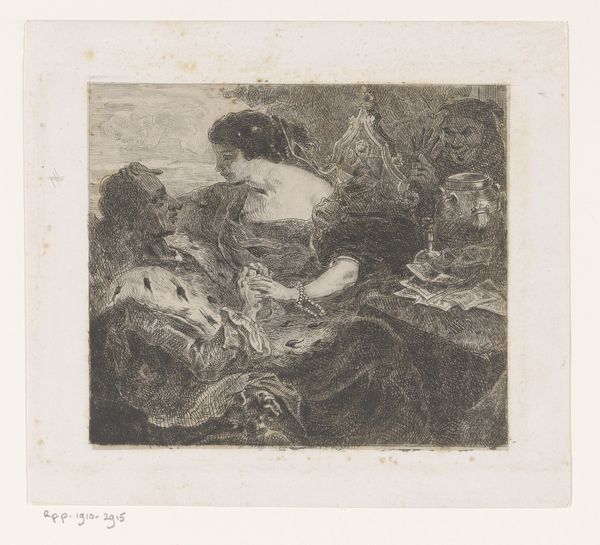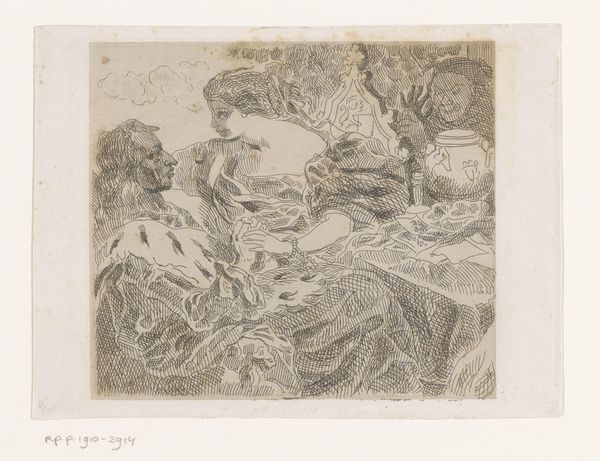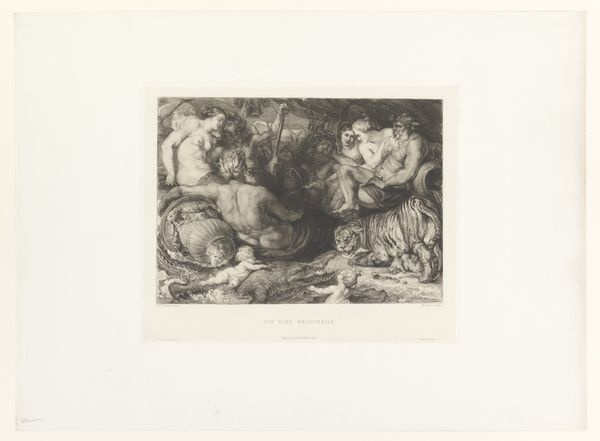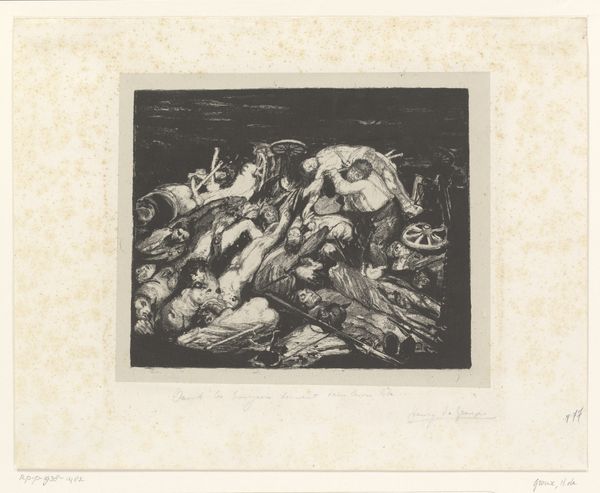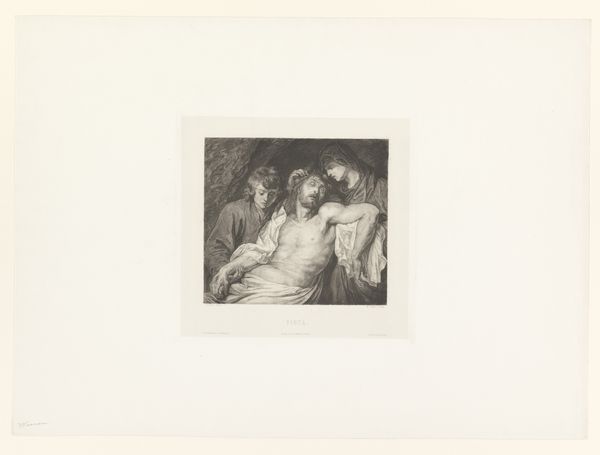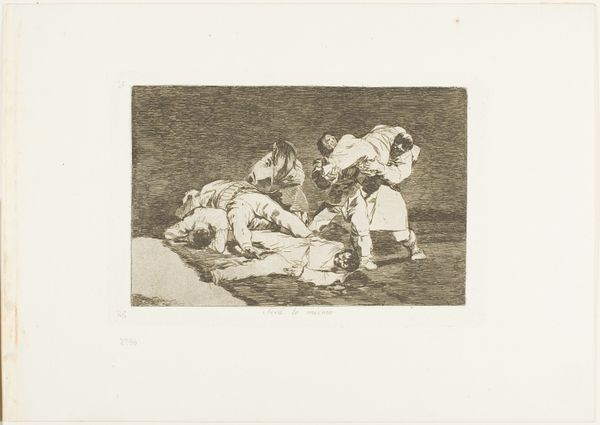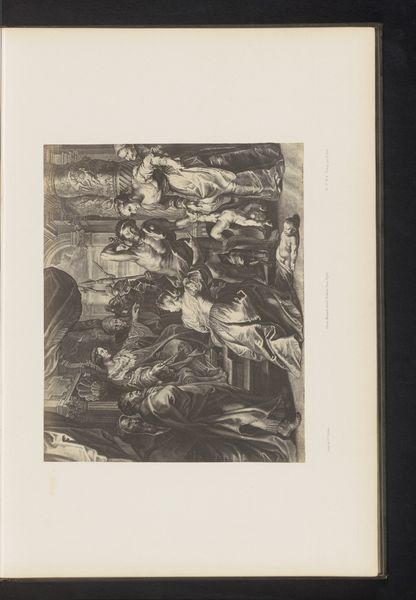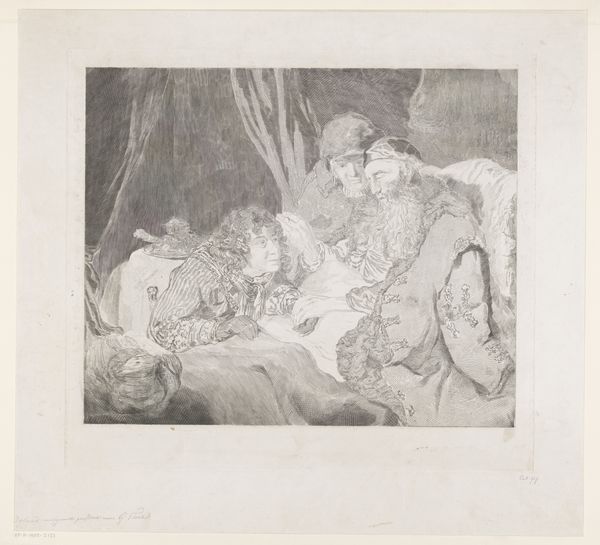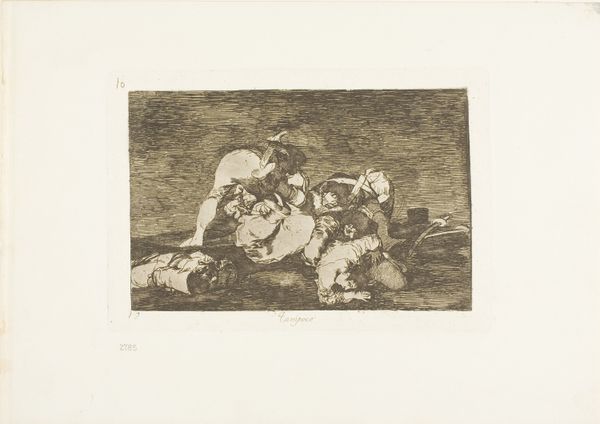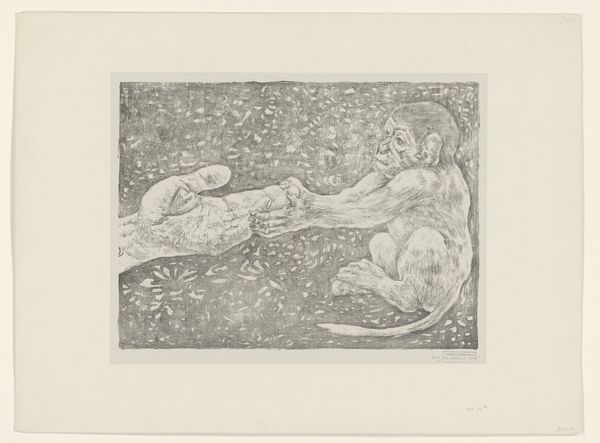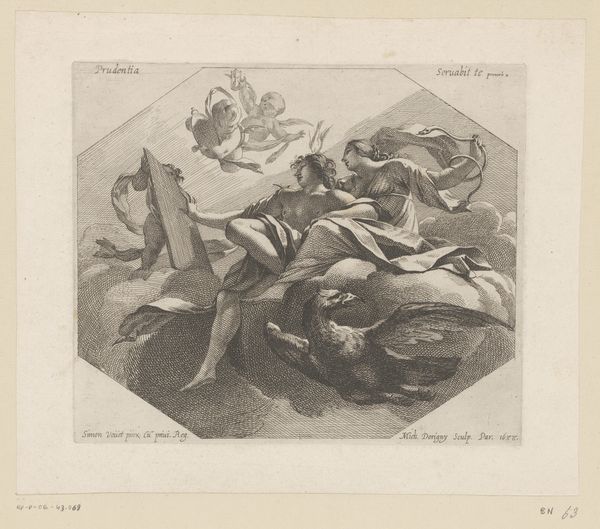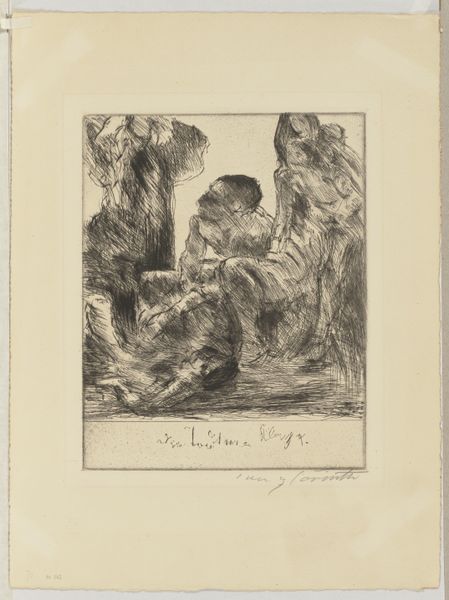
print, etching
#
narrative-art
# print
#
etching
#
figuration
#
romanticism
#
history-painting
Dimensions: height 144 mm, width 191 mm
Copyright: Rijks Museum: Open Domain
Curator: Here we have "Isabella at Table with Charles VI" by Jacob Joseph Eeckhout, likely created sometime between 1803 and 1861. It's an etching, part of the Rijksmuseum's collection. The textures in this image make me want to dive in to see more! Editor: My first impression? It’s intensely intimate but strangely unsettling. The detail in the fabric creates an incredible textural complexity but the subjects faces are distorted, it throws you off. Curator: It's a testament to the print medium that so much is achieved using a fairly restricted tonal range. Note how the lines direct your eye, especially those flowing curves across Isabella's figure in stark juxtaposition with the aged face of Charles. The romantic historical themes are very apparent. Editor: Definitely. The positioning of Isabella between these male figures and almost hovering over a shrouded form adds to the sense of drama. It's like glimpsing a scene from a fever dream and what is so concealed? A body? Curator: Consider also the narrative context: Isabella of Bavaria, whose fraught relationship with Charles VI of France was notorious for political maneuvering, courtly drama and war with England. Eeckhout's composition uses the spatial relationships and these characters, not necessarily to inform, but to stir intrigue. It also speaks volumes about the role of women at the court. Editor: Right. Knowing their history infuses this depiction with meaning. Without that backstory, though, I find the symbolism somewhat…cluttered? Does the artist’s intention even matter in the end, when viewers bring their own histories to the artwork? Curator: Ah, a pertinent question. But to analyze only how viewers interpret without engaging what an artist intended ignores art-historical discourse, doesn’t it? It denies Eeckhout's purposeful choices, especially around how the graphic presentation plays with the ideas of Romanticism. Editor: I get your point! And perhaps it’s precisely that tension—between artistic intention and subjective experience—that makes this image so compelling, even centuries later. I'm really struck by how timeless this etching feels, the story being portrayed feels so pertinent in our own lives. Curator: It's an image that both seduces and challenges. Its aesthetic force is undeniable, while its ability to spark questions about agency and meaning are powerful, yes. Thank you!
Comments
No comments
Be the first to comment and join the conversation on the ultimate creative platform.
